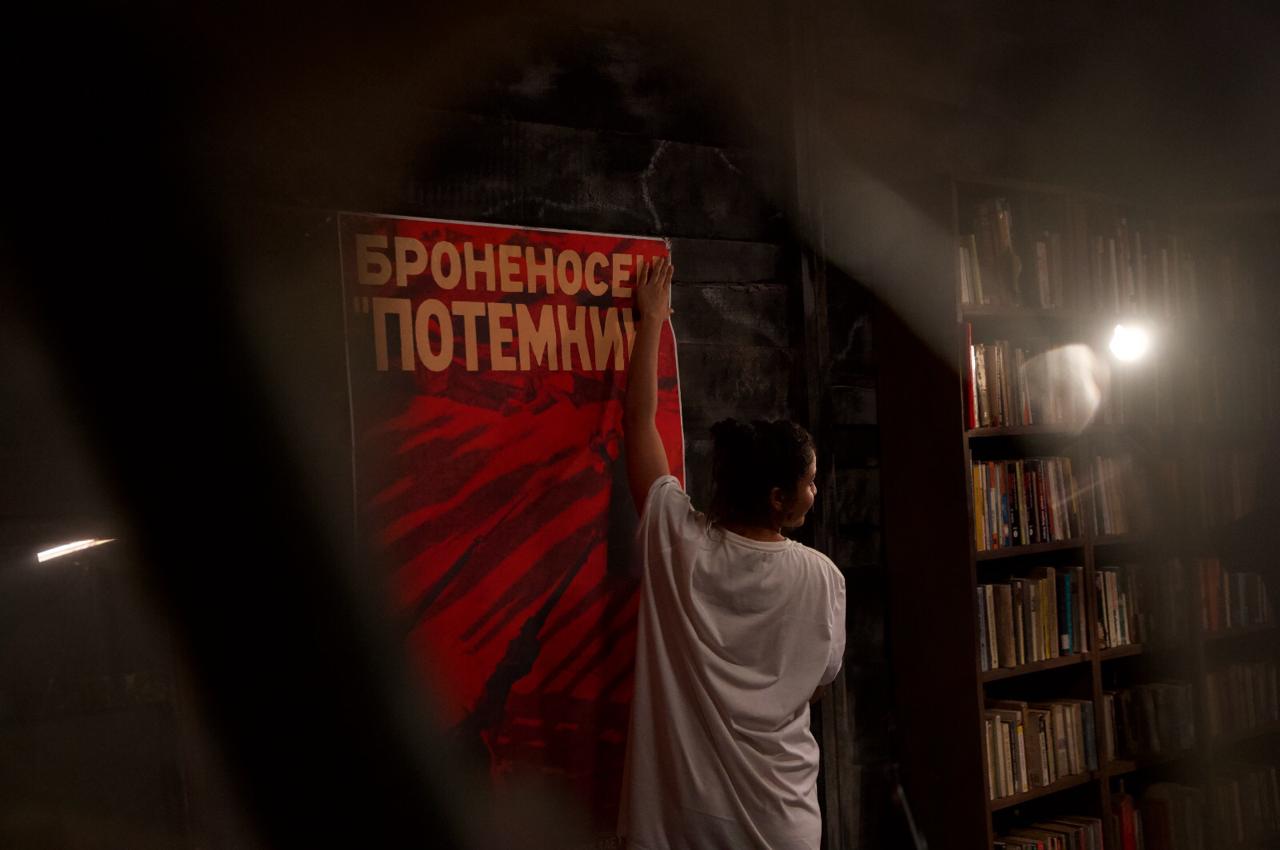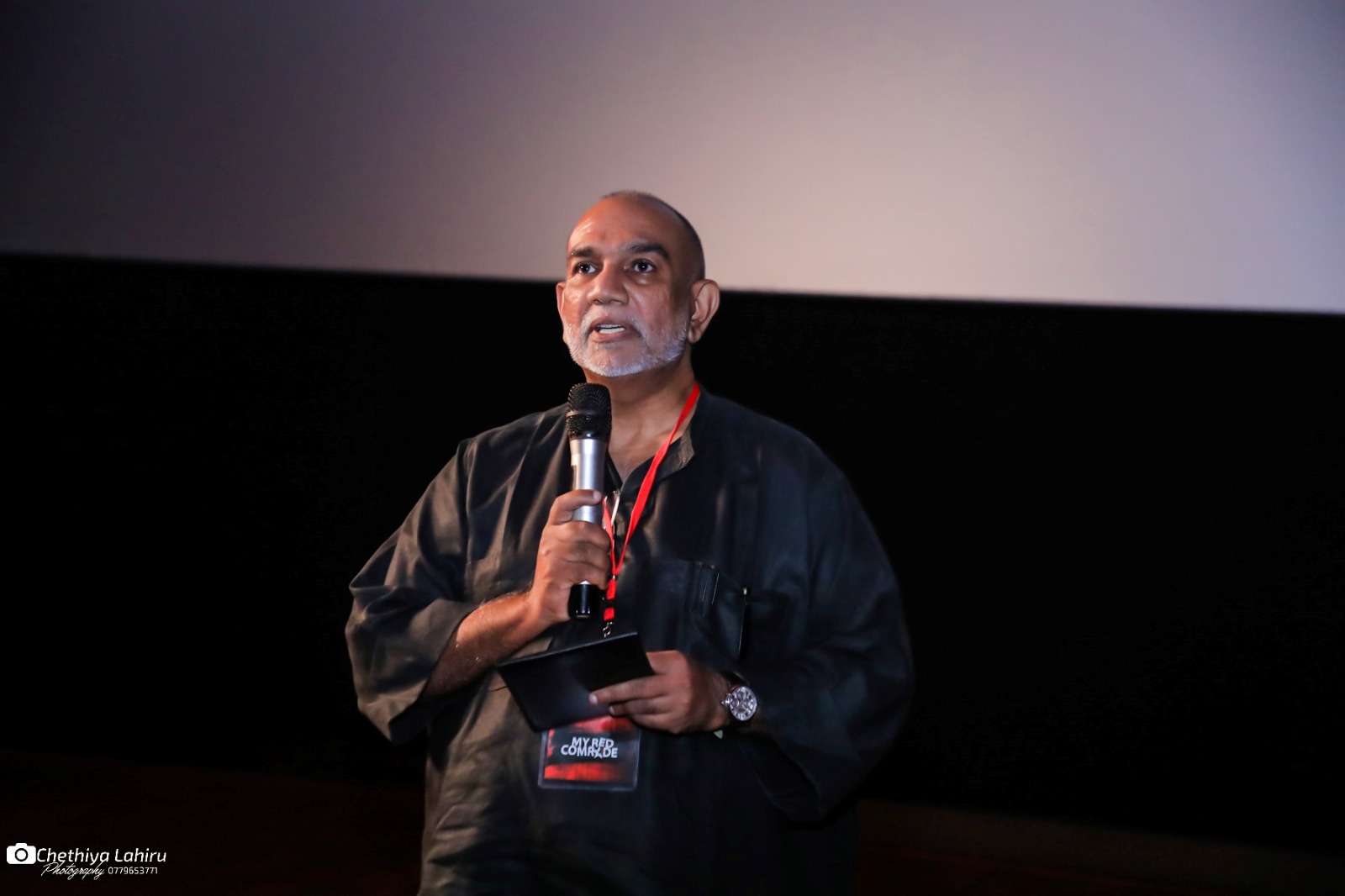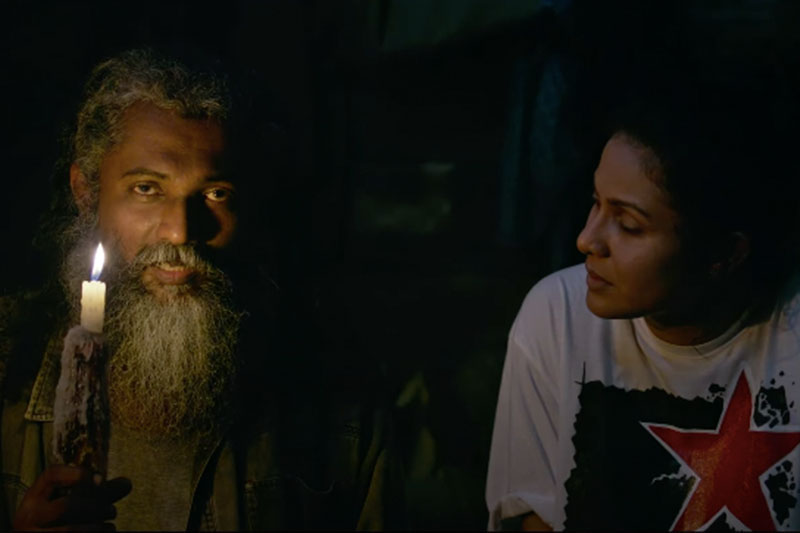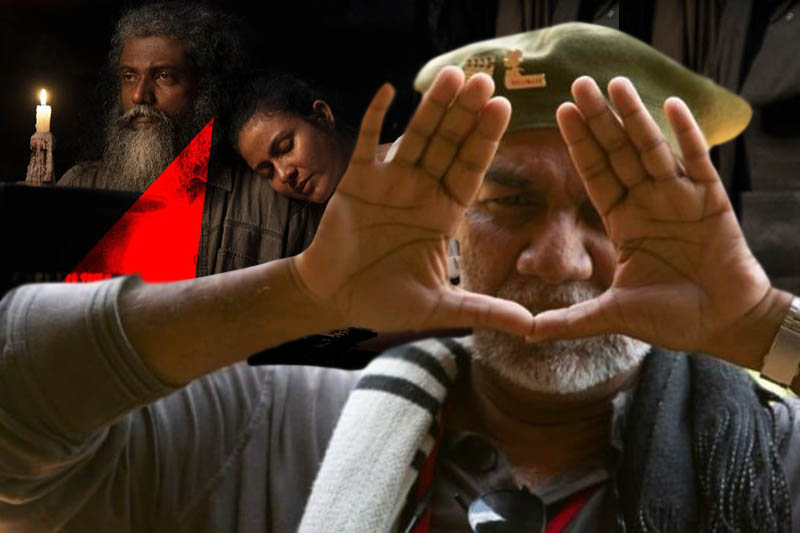Sudath Mahadivulwewa makes a spectacular return to filmmaking after an absence of nineteen years with his cinematic venture “My Red Comrade” which leaps off the popular neorealist mode, and into its own bold and innovative genre.
The story begins with a young woman being hunted by the State on a night of rain and fog. She flees along the railway tracks on the margins of the city to find a hiding place in the hut of an older man who lives as a recluse, surrounded by books of past revolutions, and darkness.
He grudgingly offers the rain sodden woman momentary refuge, and with very little grace rummages through an old suitcase for a clean shirt she could wear until her clothes dry. He is shocked when she disrobes in front of him. “I have self-respect” he protests. “Mine was washed by the rain,” she replies playfully.

This moment of nudity could be read at many levels. At the literal level, it could be the woman’s desperation to tempt the man so that she could seek refuge in his hut that night.
However, at a deeper symbolic level, it aligns with the feminine mystique as a rejection of bourgeois values which govern the female body. “What’s there to hide?” challenges the woman as her nudity sets into motion a journey of exploration into the very heart of what it is to be human in a country in which tortured and murdered naked bodies inhabited public spaces during one of its darkest eras.
And before the night is out their connection to each other across a generation would be defined and transformed by their embeddedness in that dark era of repression and struggle.

Who is she, the hunted one? Sudath Mahadivulwewa brings to the screen a female protagonist who is the witness bearer of her father’s murder by the State when she was a child. Her father’s body was then burnt along with his books.
The nameless protagonist carries this trauma of State power within her body which also becomes the vehicle of her resistance to this very power. The State possessed the power to burn her father’s books, but she resists this power to destroy by memorizing the books.
This is reminiscent of Ray Bradbury’s famous Fahrenheit 451 in which books are burnt to ensure compliance only to ruling ideas, but a group of critical thinkers sear the books into their body through memory as the basis for a free society.
Thus, the young woman’s resistance is not one of violent vengeance, but one of art and activism as a performance artist, and encompasses her whole being at the intersection of ideas, being and art. Juxtaposed against this background, her prior moment of nudity acquires yet another layer of meaning.

The film has been shot within the confines of a small room with two main characters for almost its entire length, and it is this unique feat of the director which emerges as the core strength of the film.
The setting becomes a character in the film as it acquires different layers of meaning through the carefully planned lighting, sound and cinematography. The senses of the viewer are heightened, and kept engaged through the sheer power of these visual and auditory stimuli.
The camera opens this closed underground room to the world, and especially to the gaze of the surveillance State through a window reminiscent of the concept of the Panopticon. The director has carefully paced this recurring symbol to build a complex web of meanings which play into the slow discovery of the man and woman.
Another important symbol is that of the train which runs through the landscape with unrelenting precision, calling us to journeys beyond the frame. And the journey within the frame only unfolds in the shadow of this larger, expansive landscape of other journeys.
Thus, the tight control of the director of this minimalist setting allows him to delve into the layered narrative which is more cerebral than sentimental. The audience is invited into the frame to form their own interpretations as active participants, especially at the end when the main protagonist passes on her political agency to the audience.
Sudath Mahadivuwewa’s “My Red Comrade” is uniquely Sri Lankan in the history which it depicts, but is universal in its themes of trauma, State power and resistance. The film is an experimental statement for a politically conscious audience open to the many possibilities of the cinematic form.

*Dr. Francesca Bremner is an anthropologist with MA, MPhil and PhD degrees from Columbia University in the City of New York. She teaches at the City University of New York/Queens College.





















